We’ve all heard the adage about something being “As American as mom and apple pie,” but have you ever heard of Vinegar Pie? While researching in the Colorado Historical Newspapers Collection, I encountered this unusual alternative to our national favorite in the May 16, 1905 issue of the Leadville Herald Tribune. The title gave me pause. Historical recipes occasionally fall through the cracks of time as tastes shift, ingredients become more or less available, and, in some cases, simply because they’re not very good. Could a concoction such as vinegar pie actually be enjoyable? What sort of pie is it, exactly? All things being worthy in the name of historical research, I decided to bake the recipe and share the results with you here.
As any good baker or cook will tell you, before undertaking a new recipe, it’s important to read and fully understand the instructions in advance. Woe to the baker who begins a sweet treat on the morning of a special occasion, only to make it halfway through and find the dreaded “refrigerate overnight” instructions!
Baking success is also sometimes dependent on knowing the historical context of your dish, particularly when creating a dessert described more than one hundred years ago. As an example of the challenges posed by historic recipes: you will often find that specific temperature and bake time prescriptions are missing entirely.
Vinegar Pie circa 1905 did indeed require some historical consideration, reasoned guesswork, and significant vigilance. Let’s break down the formula of our historical document and examine what challenges it presents. The following is my annotated version of the recipe:
A quick google search turns up that a gill is ½ cup. For the vinegar, we’re going to assume for sanity’s sake that this is an actual cup measurement, and not a teacup or other container. And why in the world would they say “two quarters of a cup,” instead of the simpler “half?” Might our baker have possessed only a ¼ cup measuring tool?
“Stir until melted, then add three-quarters of a cup of cold water. Cook, stirring steadily until thick, then pour into an open crust and bake at once in a very hot oven. ”
The astute reader will note there is no cook time mentioned, nor analogy to what the mixture’s thickness should look like. To the modern eye it seems like we’re making something similar to lemon curd here. Unfortunately, it wasn’t until after I had already poured only somewhat thickened vinegar liquid into the crust that I realized this fact. Also, the original author clearly assumed a pie crust was sitting around ready for use (and did not provide a recipe for one). I reasoned that if they can have crusts just sitting around in case of need, so can I, so I cheated and used a pre-baked graham cracker pie crust (ah, the perks of the modern grocery store).
Turning to the questions of how long, and how hot, to bake the pie on this first round, a little further guesswork comes to play. Assuming the baker in 1905 would’ve been using a wood-burning or early gas stove, the lack of specifics makes some sense: they could not have simply set the oven to a constant temperature, and thus the bake time could vary widely. A hot oven would just have to be a hot oven, and one would have to keep an eye on things.
After some internet and cookbook sleuthing, and in the interest of convenience, I decided to treat this pie like a lemon meringue pie, and so investigated the typical temperature and bake time for those. For the pre-meringue baking round, I settled on 350° (350° is “hot,” right?) and 20 minutes, plus a few extra to account for altitude. While I was baking at a mile high, our Leadville baker would've been at nearly two miles! Perhaps the lack of bake time wasn't terribly relevant, after all. While the undercooked vinegar curd baked, I turned to the meringue.
“When done cover the pie with a meringue made of the whites of eggs beaten to a stiff froth, with a tablespoonful of powdered sugar…”
As a meringue novice I only had a vague idea of how you make meringue. How many eggs do you use for a pie? Do you really add only powdered sugar? It was time for more research!
Finding the following recipe that suggests using five eggs, and this one that lists the number of minutes you cook a two-egg or three-egg meringue, I calculated the meringue pie would need to bake for around 21 minutes, plus a few extra for altitude.
But first I would need to whip the eggs into stiff peaks. In keeping with a historical recipe, I opted to ignore modern additions of cream of tartar, and also to whip my room-temperature egg whites by hand. Five very aerobic minutes later, with sadly unfrothed eggs, laziness won out and I grabbed the electric hand mixer. After another five to seven minutes, I had beautifully peaked egg whites. Bakers of the early 20th century must’ve had phenomenal arms from all of that whipping!
“…bake to a light brown. Serve cold.”
This moment is where I most came to appreciate the beauty of modern recipes that list time and temperature. In order to make sure I didn’t scorch the heck out of my pie, I was peeking in on it every few minutes. Multi-tasking to prepare different dishes, hand wash clothing, or tend to children or farm animals would not have been an option. Bakers in 1905 really had a harder lot than us.
When my meringue looked set and perhaps a smidgen too toasted I removed the pie to cool (incidentally, this was 20 minutes in, thank goodness for my watchful eye). Ignoring that my curd was more of a viscous liquid than gelatinous solid, the first taste went like this, “WOW, that’s a burst of interesting flavor! It’s sweet and sour without being bitter!” Followed by, “something tastes metallic…what is that aftertaste…oh no, no, no this won’t do.” The pie ended up in the garbage can.
Overall, this experiment was a lesson in how tastes change, and how modern conveniences have perhaps made us a bit too complacent in the kitchen. This recipe did not allow me to operate from a place of trust. As a hobby baker, I have never examined a modern recipe to the degree I did this one, but fortunately, the internet and our digital collection were helpful tools. Overall, today we can avoid constantly checking on the pie in the oven; although truth be told, you are less likely to burn your efforts with old-fashioned “constant vigilance!”
A further bit of historical knowledge might allow me to improve upon my first test. The Colorado baker of 1905 may have been more likely to use apple cider vinegar than the white version. White vinegar is fermented from grain alcohol (also an ingredient in the significantly dearer drinking whiskey), but apple cider vinegar is fermented from apple cider, or from a similar substitute called “apple scrap vinegar” that one can easily make at home. Apple husbandry and orchards were a common feature in Colorado during the early part of the 20th century, and so our recipe author may have had apple cider vinegar closer to hand.
If any of our readers are game to try the recipe with apple cider vinegar, or even to try this drastically different modern version, please let us know how it goes! In the meantime, I’ll be sticking to apple pie.

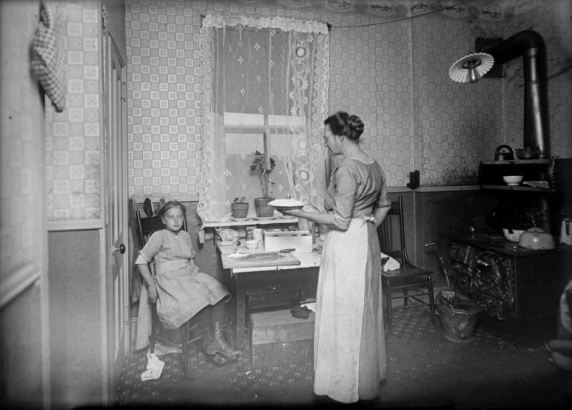

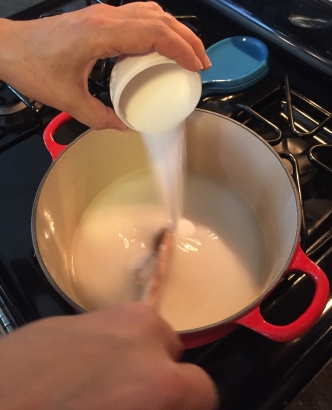

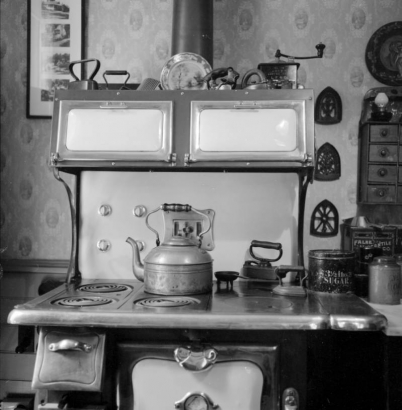
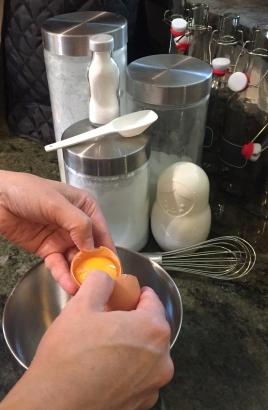
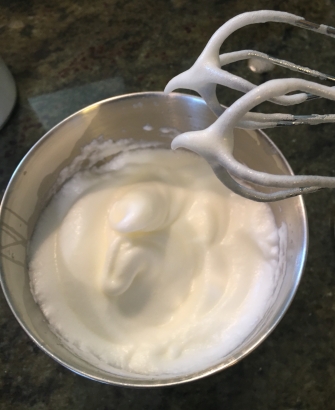
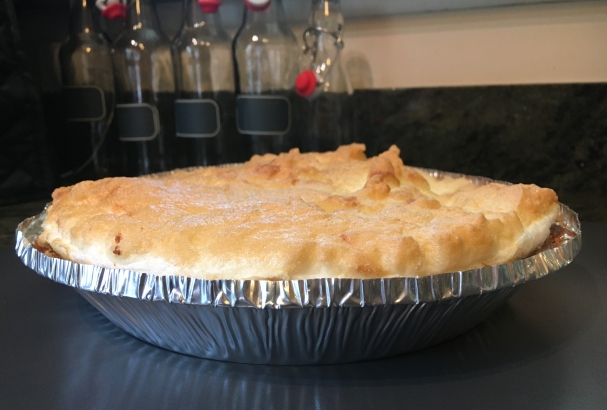

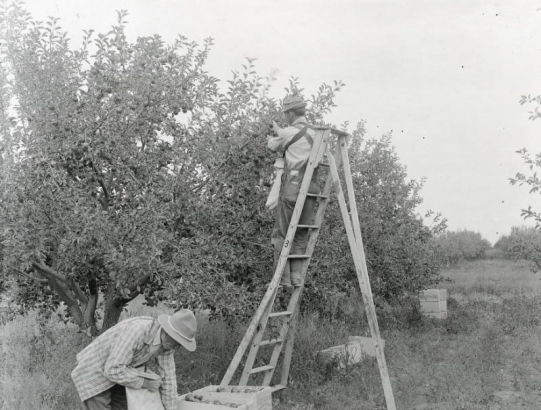
Comments
Stumbled across this looking
Stumbled across this looking at other resources on the Western History website and am so intrigued! I love how productive the comments section has been and am honestly now curious to try this out just to see :) 'Tis the season for pie baking!
Hi Sarah, thanks for your
Hi Sarah, thanks for your comment. Our readers are really the best: helping solve mysteries and sharing their own knowledge! I'm planning on trying a few of the comments section suggestions as well. If you do, let us know how it turns out!
You made my night, truly. We
You made my night, truly. We have wondered about vinegar cobbler (virtually the same premise) for years - largely due to an obscure reference that popped up in a family history as a favorite. Ten years ago, I stumbled upon a recipe out of Llano, Texas (where said family was from) and thought I'd give it a whirl. 1/2 cup vinegar, 1 1/2 cups sugar, 2 cups water, a pinch of nutmeg and "lots of butter" topped with pie dough later, I had something that tasted like pecan pie without the pecans. Said I, "Why would a family of pecan farmers make something akin to pecan pie without the pecans?" Our family saga continues. It could be that folks during the Great Depression were low on tree nuts...
That's a mystery indeed!
That's a mystery indeed! Pecan pie is so delightful, I don't think I could bring myself to leave out the pecans. Perhaps, as it was Depression-era, the pecans were strictly for selling.
Thank you for sharing your story, and for your comment!
When I was growing up in
When I was growing up in Florida, every summer we'd travel to Franklin, NC for a stay in the Smoky Mountains. Along the way on Hwy 441, just south of the NC state line, we'd always stop at an inn in Dillard, GA (not the Dillard House) to have a meal and vinegar pie. This is over 50 years ago and I don't think the inn is there anymore. The vinegar pie had no meringue, had the consistency of a pecan pie without the pecans, and was baked in a top and bottom crust. It was the most delicious pie I've ever had and recipes are few and far between. I have yet to find one just like the one we enjoyed in Dillard.
There are many , many recipes
There are many , many recipes for this pie .. call it Vinegar Pie , Preacher or Pastor Pie or Transparent Pie.. and made correctly it is very good . Some tasting like a key lime ( vinegar used instead or lime or lemon ) , with added raisins or nutmeg ,, as I said many versions .. and not with a store bought graham cracker crust . when trying your hand at an old recipe it is wise to check out and research other recipes of the same name.
Hi!
Hi!
I am reading a cookbook right now called The Black Family Reunion and they have a Vinegar Pie labeled as a Heritage Recipe that is pretty neat and quite different than this one. I came across your post as I was trying to research the origins of this one. It doesn't have meringue and uses what looks to be like pumpkin pie type spices, cinnamon, cloves, allspice. It also uses only 2 tablespoons of cider vinegar and only 1 egg. Thought you may find this interesting. Oh and its 350°F for 45 minutes.
Here's a recipe for you to
Here's a recipe for you to try, if you're not burned out on vinegar pie. I've found folks won't even try this if you call it 'vinegar pie'---so, since it was often made on cattle drives, I renamed it 'cowboy pie.'
Cowboy Pie (aka: Vinegar Pie)
1/3 c. flour
3 t. cider vinegar (must use cider vinegar, gives pie apple taste)
1 T. butter
1 c. sugar
1 t. nutmeg
1 1/2 c. water
Crumble butter and flour together (mix with fork until crumbly). Add sugar and nutmeg then vinegar and water. Stir. Pour into unbaked pie shell. Bake at 400 degrees for 15 minutes. Reduce heat to 350 degrees and bake until bubbles form on top.
An old timey recipe when folks didn't always have eggs or fruit for desserts. Try it--it's good!
additional info. re: cooking
additional info. re: cooking in a Dutch oven--
If you are cooking with a wood instead of charcoal briquettes---here’s
how to tell the temperature of your Dutch oven:
use the back of your hand near the oven counting "one thousand one, one thousand two, etc.---
a count of 6-8 seconds = 200-250 degrees (a "slow" oven)
4-5 seconds = 350 degrees (a "moderate" oven)
2-3 seconds = 400-450 degrees (a "quick or sharp" oven)
1 second = 500+ degrees (and is too hot to cook in)
Or, you can put a teaspoon of flour in a small pan & place into a pre-heated Dutch oven. After 5 minutes:
---if the flour has no color, the oven is less than 300 degrees;
---if it is light-golden brown, the oven is 350 degrees;
---if caramel/darker brown, the oven is 450 degrees;
---if dark brown after 3 minutes, or burned after 5 minutes,
the oven is too hot to cook in.
Luann, thank you for sharing
Luann, thank you for sharing so much helpful information! I'm glad to know these tricks for determining temperature! And I'll definitely have to try Cowboy Pie.
Add new comment